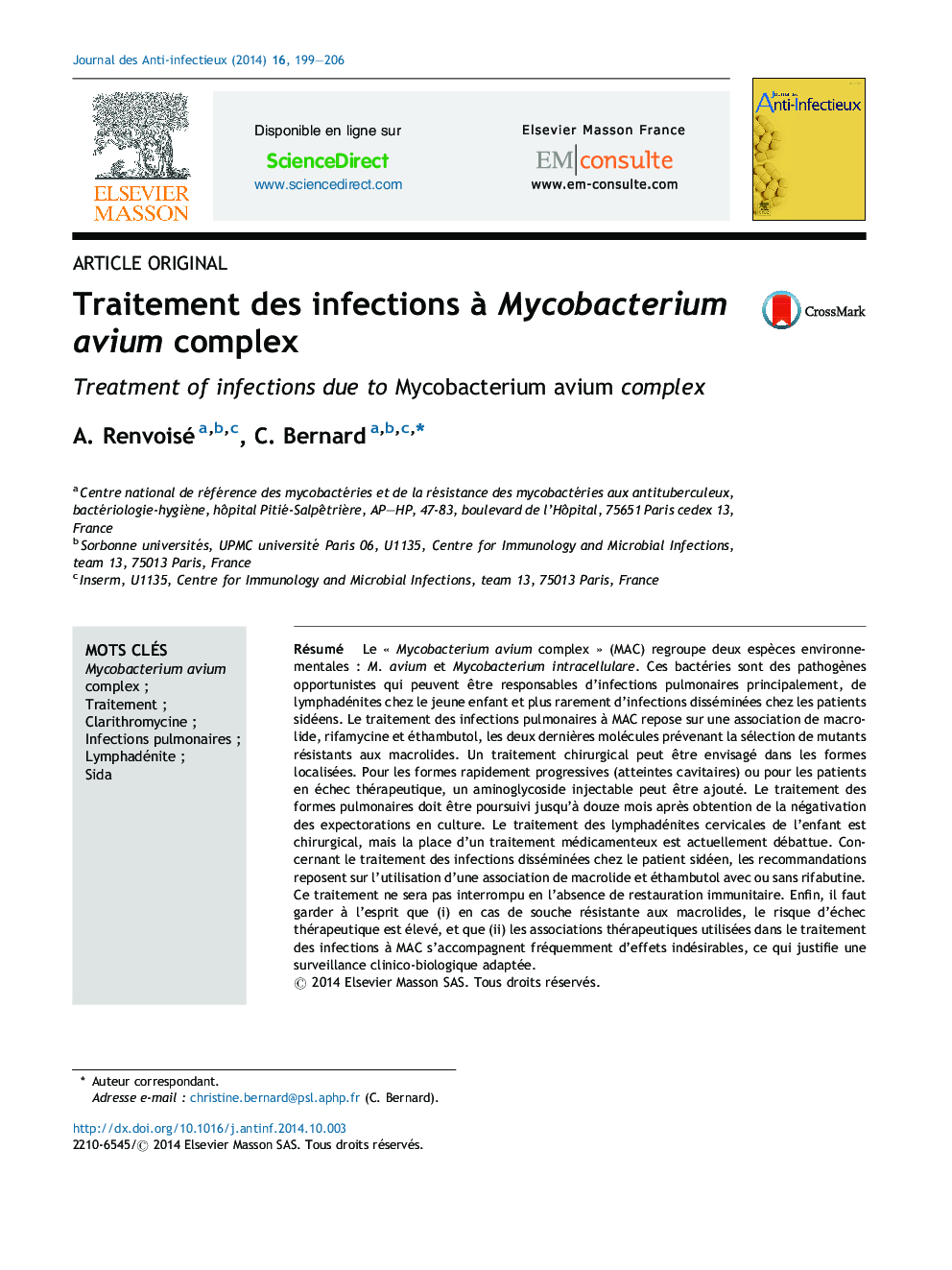| Article ID | Journal | Published Year | Pages | File Type |
|---|---|---|---|---|
| 3405405 | Journal des Anti-infectieux | 2014 | 8 Pages |
Abstract
The “Mycobacterium avium complex” (MAC) includes two environmental species M. avium and Mycobacterium intracellulare. These bacteria are opportunistic pathogens that may be responsible for lung infections mainly, lymphadenitis in young children and rarely disseminated infections in patients with AIDS. The treatment of pulmonary MAC infection is based on a combination of macrolide, rifamycin and ethambutol, the last two molecules preventing the selection of resistant mutants to macrolides. Surgical treatment may be considered in localized forms. For rapidly progressive disease (with cavitary lesions) or for patients with treatment failure, an injectable aminoglycoside can be added. The treatment of pulmonary disease should be continued until twelve months after the sputum became negative in culture. The treatment of cervical lymphadenitis in children is surgical, but medical treatment is actually being discussed. Concerning the treatment of disseminated infections in patients with AIDS, the recommendations are based on the use of a combination of macrolide and ethambutol with or without rifabutin. This treatment will not be interrupted in the absence of immune restoration. Finally, we should keep in mind that (i) if the strain is resistant to macrolides, the risk of treatment failure is high, and (ii) combination therapy used in the treatment of MAC infection are frequently accompanied with adverse effects justifying biological and clinical monitoring.
Keywords
Related Topics
Health Sciences
Medicine and Dentistry
Infectious Diseases
Authors
A. Renvoisé, C. Bernard,
